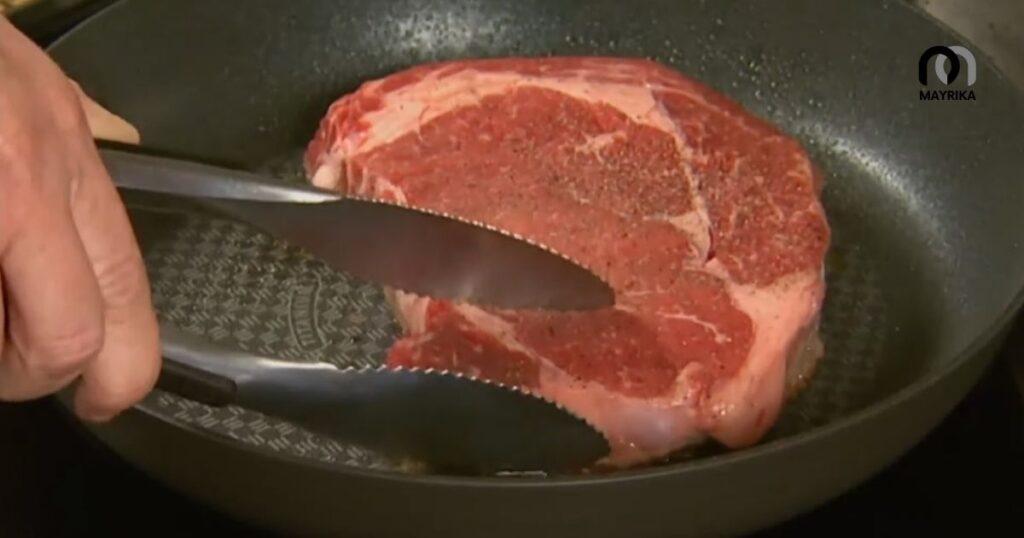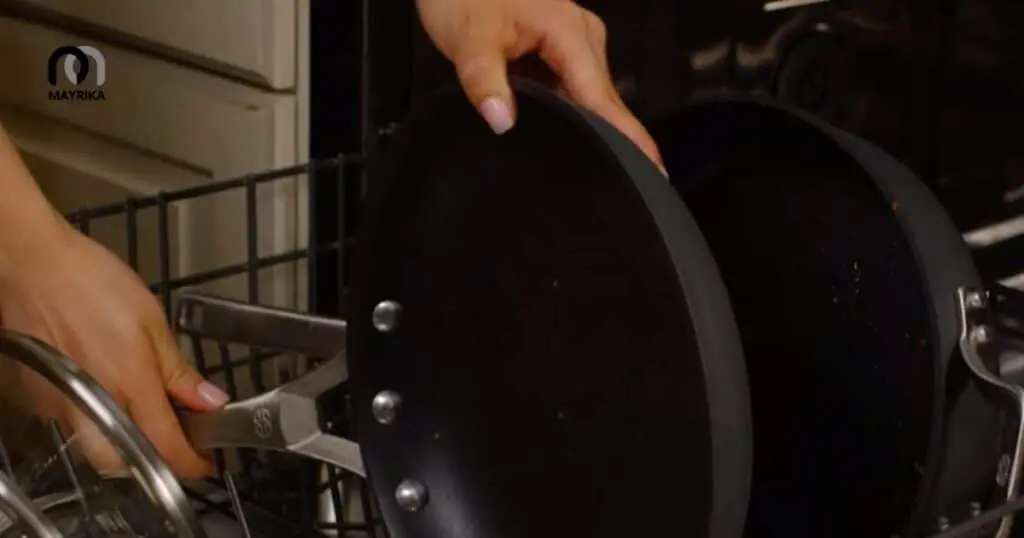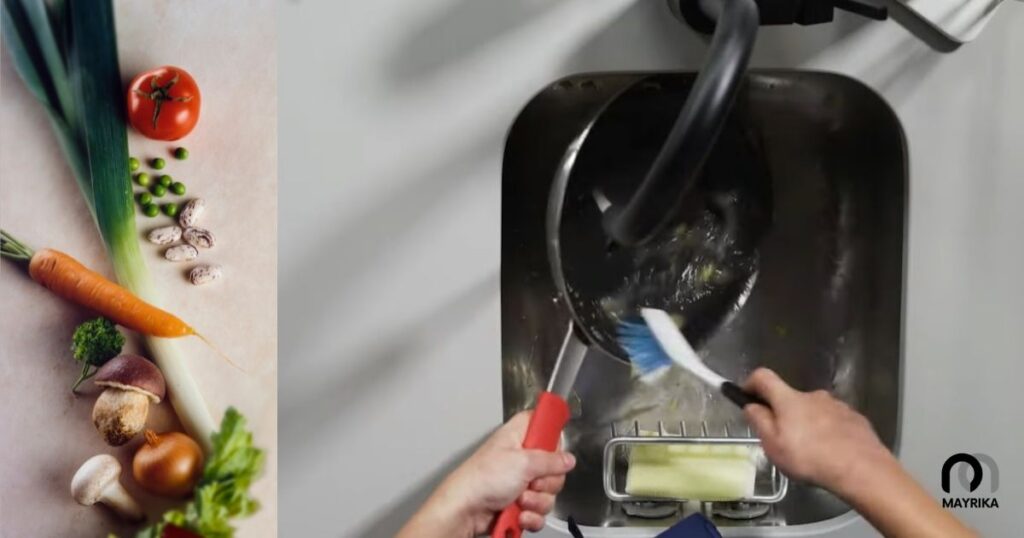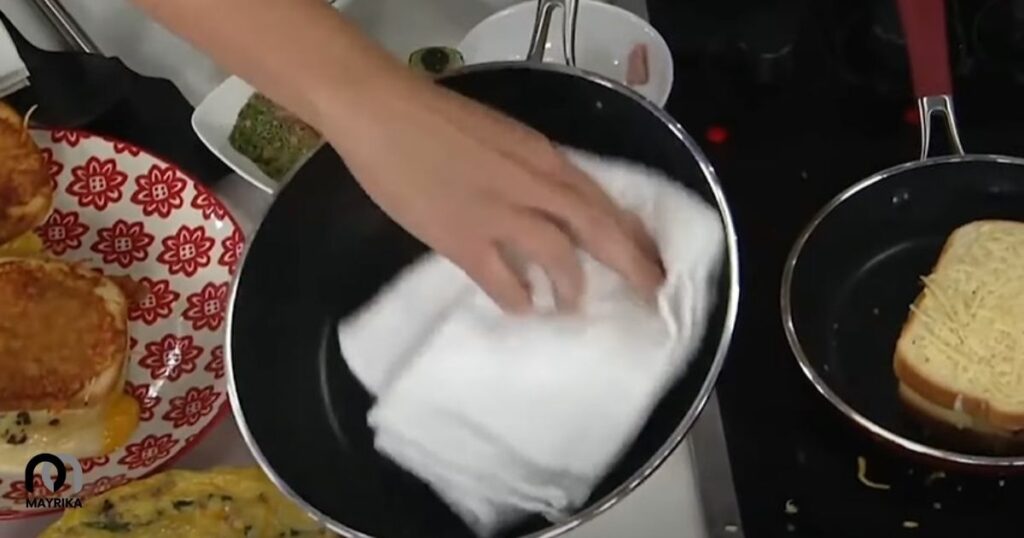Many people are under the impression that using nonstick cookware will never have to do any scrubbing again. But this is not true!
Non-stick coatings at times can become scratched and worn down, meaning you need to take steps to clean your pans.
For your cookware to last as long as possible, it’s essential to know how to clean nonstick cookware. Unfortunately, cleaning nonstick cookware is a tricky process.
It can be hard to know what will make it best, and many people are afraid that the wrong cleaner will ruin their pans.
The good news! Nonstick coatings are made of polytetrafluoroethylene (PTFE), which is also known as Teflon. This chemical doesn’t react with soap or water, so you can use it either to clean your cookware.
It’s no secret that the best nonstick cookware is often made of Teflon. But what many people don’t know is how to clean nonstick cookware. And maintain their pots and pans properly.
Even if you’re not a professional chef, there are some steps you need to take when it comes time to wash your dishes.
Nonstick cookware care dos
Before use, always read the manufacturer’s instructions for the use of the pan. Always cook on a low to medium heat setting.
Cooking at lower temperatures will help prevent overheating or overcooking your food. Long cooking times may lead to spotting and warping pans.
Avoid using high heat settings such as broiling when preparing foods containing a lot of sugar. They can erupt by themselves and burn with extreme intensity, which can damage cookware.
Use nonstick bakeware only in ovens operating at 350° or below; higher temperatures can cause eggs, pie crusts, cakes, and pastries to scorch easily.

Nonstick cookware care don’ts
Here are a few things to avoid when caring for your nonstick cookware:
- Never use metal utensils on a pan coated with the surface.
- Don’t ever put an empty pan in the dishwasher.
- Observe the manufacturer’s instructions by not using high temperatures, soaking, or running the oven without food in it (if you do run this risk, make sure you cook any leftover residue out).
- Always wash by hand and never clean with steel wool or scouring pads; instead, use soft nylon sponges and silicone scrubbers/scrapers that can tolerate warm soapy water.
If your pans have established scrapes or scratches over time, it is best to replace them.
Benefits of nonstick cookware
We have found that nonstick cookware can provide many benefits and ease cooking by making it more accessible through our research.
Nonstick cookware is often thought of as a luxury item for people who enjoy cooking. This cookware, however, is beneficial to many people in different ways.
- It helps with the preparation process because it doesn’t require oil or butter to prepare food.
- Some studies have shown that nonstick cookware has been shown to help reduce obesity in children and adults because it limits the intake of fats and oils.
- Finally, with this type of cookware, clean-up is easier than most other types because most foods will slide off when washed with water.
Overall, nonstick cookware has many benefits that make it worth the investment for home kitchens and professional chefs alike!
How to clean nonstick cookware?
Generally, all of us are caring about the easy way to clean nonstick cookware. This is because we want to make our pans appear perfect as new again. But there are some ways for this.

Skip the dishwasher
We know it sounds like the easiest thing in the world. We mean, shove everything into the dishwasher and be done with it. But that’s not what we’re going to say here.
And you may find yourself regretting doing so if you do use your dishwasher as a common way of cleaning up your pots and pans.
Dishwashing detergents are designed to cut through the grease and dirt on dishes; that is why they are such terrific cleaners in this context.
But also strip off all those protective layers–including any non-stick coatings that might be on them–and then leave behind residues of their own, which will harm your cookware over time.
Dishwashers use a lot of water, and high heat, which can be hard on your non-stick pans.
Clean immediately with hot soapy water
If you have nonstick pans and pots, take care to follow the manufacturers’ directions and never use abrasive or dish soap products, which could weaken the material.
In short, always clean immediately after use with hot soapy water–and never use anything abrasive or dishes with harsh chemicals when doing so.
Wipe down with a sponge if necessary and air dry by setting it on a folded cloth in an oven that has been set at 325 degrees Fahrenheit for 10 minutes.
Avoid abrasive and metal pads
There are certain kitchen tools that every cook needs for their everyday use while cooking. But many cooks don’t realize the importance of a good sponge or dishcloth to clean those dishes and utensils.
First, try using a mild abrasive cleaner like soap or baking soda if you have hard water in your area.
Second, put some elbow grease into it by scrubbing them out with a dishcloth or, better yet, an old toothbrush to make sure you reach all the nooks and crannies around the outside of your pots and pans.
Rinse it off afterward before using your other cooking utensils for the best results!

Remove cooked-on grime with baking soda
There are a lot of misconceptions when it comes to cooking, especially about how to clean nonstick cookware. For example, most people (and thus many dishwashers) do not know that the safest way to clean these pots and pans at home is by using baking soda.
It’s easy – grab a tablespoon of baking soda for every liter of water and stir them together in a pot until they dissolve.
Bring the pot to boil, then remove it from the heat source, leaving the lid on so that pressure doesn’t escape with steam (you don’t want any accidents!).
Carefully pour just enough water onto your cooking surface, thoroughly wetting it – then let it sit for 15 minutes or more before scrubbing gently with an old sponge.
Try a cleaning cocktail
The key to cleaning most nonstick pans is not to use soap and water, as it may close the gaps in the coating and lead to corrosion.
To clean your nonstick pots or pans, try a solution of distilled vinegar or baking soda dissolved in water (1 part baking soda to 3 parts water).
Spray the mixture on all surfaces and stand for 5-10 minutes before wiping off the residue with a paper towel or sponge.
Oil up your nonstick pans
Which type of oil? That depends on whether the nonstick coating is composed primarily of PTFE or Teflon.
The best cooking oils for cleaning nonstick are olive, canola, grape seed, coconut, peanut, and vegetable oil (particularly if they’re cold-pressed).
Please don’t use butter or margarine because it’s too saturated and challenging to get off later when reheating leftovers. Butter is okay for grilling foods over high heat but not for cooking.
Dry thoroughly
Non-stick pots and pans are pretty much designed to be easy to clean; the critical thing is that you don’t let them get wet in the first place.
That means no soap on them, which will create a big, sticky mess when it comes time to dry them.
Dry thoroughly by hand or with a paper towel before putting it away. Clean small spots of stuck food by rubbing with a paper towel moistened with vegetable oil before washing with warm soapy water.

How to clean hard anodized nonstick cookware?
Hard anodized is a process of electroplating the aluminum surface with a thin film of porous aluminum oxide. It provides durability and scratch-resistant properties of hard anodized, and it’s also non-reactive.
A straightforward way to clean your hard anodized cookware is to fill it with water, add a squirt of dish soap, and then put it on the stove.
The hot water will cause any burned-on food to come off. Then you can rinse with cold water, dry it, and put it away.
A better way to clean your hard anodized cookware is by using Bar Keepers Friend or another scouring powder in the same manner as above.
For tougher stains, you can use baking soda mixed with vinegar for a more abrasive scrubbing.
How often do you clean nonstick pans?
It’s a question that comes up time and again, but the answer is surprisingly straightforward.
Nonstick pans are typically made of Teflon, which is a type of polymer. When these are scratched, the surface begins to deteriorate.
This leaves the pan with microscopic holes that can cause food to stick or react negatively when heated.
Nonstick pans should be cleaned after cooking with them every time, but they should only be soaked with hot water to avoid scratching the surface even more.
It’s also suggested that you don’t use abrasives when cleaning your pans. You don’t leave them soaking overnight because this will cause the nonstick coating to deteriorate sooner than it would otherwise.
Store nonstick pan properly
If you leave them in the kitchen cupboard, your pans will attract dust and dirt very quickly! But it doesn’t matter to wash them right after using.
Just do not forget to store them well so you don’t have problems with spaces between pans and other kitchen utensils, as metal can scratch nonstick coatings if they’re not stored carefully.
Tips to keep your nonstick cookware clean longer
We find it difficult to clean the kitchen properly alongside our family. Non-stick cookware is specifically tricky to keep clean and fingerprint-free due to its slick surface.
The key is that you must never use anything abrasive or scratchy when cleaning it, like metal scrubbers or cooking sponges. Those will mess up your non-stick coating pretty quickly!
Instead, wipe with soft dishcloths or sponges soaked in detergent and warm water and then dry gently with another cloth.
Please don’t put the pans through the dishwasher either! The heat of long cycles can also ruin your non-stick surface (especially if there’s fat in the pan). Just wash by hand quickly!
What is the most durable non-stick cookware?
Teflon is the most popular nonstick coating and is used in most nonstick cookware. Teflon has been around for about 50 years and has been subjected to rigorous testing. It does not contain any harmful chemicals such as PFOA or lead.
The second most popular material for non-stick coatings is ceramic, which has a harder surface than Teflon but can also be scratched by metal utensils.
The third material is titanium, which doesn’t require the coating to be baked on and instead bonds with the metal in a process that takes about 3 hours in a 450-degree oven.
Titanium cookware is more expensive, but it will last you a lifetime. It does not release toxic fumes when heated at high temperatures like other materials do.
If you are looking for durable non-stick cookware, then there are many options to choose from. However, some of the most popular choices are as follows:
1. GreenLife Soft Grip Healthy Ceramic Nonstick Cookware Set
2. Calphalon Simply Nonstick Pots and Pans Set
3. Rachael Ray Brights Hard-Anodized Nonstick Cookware Set
4. T-fal Signature Nonstick Dishwasher Safe Cookware Set
5. T-fal Signature Titanium Nonstick Cookware Set
Conclusion
There are many different methods you can use to clean your nonstick cookware. The one that works best for you will depend on the most damaged surface and how often it gets used.
If the coating is chipping off, we recommend using a Bar Keepers Friend or Bon Ami powder mixed with water until it forms a paste-like consistency.
Then, scrub away at the problem area while rubbing in small circles. It takes time, but you should get all of those pesky stains out!
Read Next: How To Clean Induction Cookware?
FAQs
-
How do you get sticky residue off non-stick pans?
Wiping the cookware with a sponge after use should remove most of the residue. However, if it remains, place the cookware in the freezer overnight.
The following day, the residue should be easily removed with a sponge.
-
How do you clean a burnt non-stick pan?
If your nonstick pan is burned out, you have to be careful when cleaning it. Before you start, turn the heat down and put some cold water in the pan.
Then use a soft brush, non-abrasive cleaning pad, or paper towel to wipe out the burned material. Once you have removed the burned material, wipe out the pan again with some soap and warm water.
Next, let the pan soak in warm, soapy water. Then use a soft sponge to remove the burned-on food. You might have to use a non-abrasive cleaning pad or scrub with a plastic scouring pad.
However, if the nonstick pan has stainless steel lining, avoid using a scouring pad.
-
Does baking soda ruin nonstick pans?
The answer to the question is, no; it does not. Baking soda is the primary ingredient in a much scratch-resistant nonstick cookware coating.
-
Can I use soap on nonstick pans?
Yes, nonstick pans are safe to use with soap, but only non-abrasive soap, such as liquid castile soap, liquid dish soap, and natural soap.
-
How to clean the nonstick pan bottom?
You can clean a nonstick pan bottom by rubbing the bottom of the pan with plain table salt and then wiping it off with a dry cloth.
-
What is the best way to clean non-stick pans?
The best way to clean non-stick pans is by using a nylon scrubber, and this can be done with warm water and soap to help you get the most out of your non-stick pans.
If that doesn’t work, you can use baking soda and water solution or vinegar. These solutions will remove stains from the pan as well as loosen stuck-on food particles.
-
How do you make non-stick pans look new again?
There are a few ways to make non-stick pans look new again. One way is to use baking soda and water paste to scrub off any built-up residue or burnt-on food.
Another way is to use vinegar and water solution to scrub off the residue. A third way is to use a non-stick cooking spray to coat the pan and then wipe it off.
